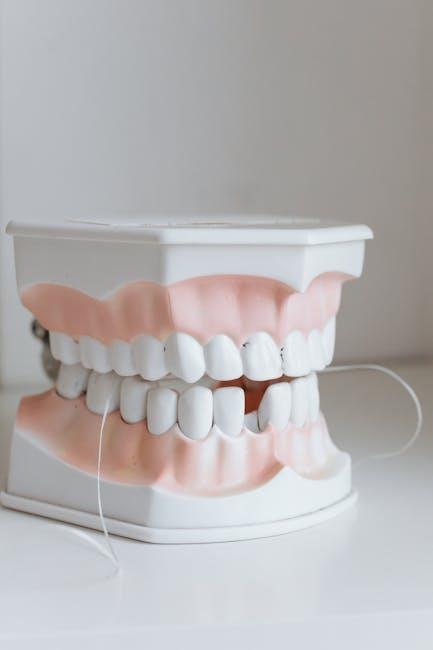Fluoride Ban Could Create Cavities For 1 Of Every 3 U.S. Kids – U.S. News & World Report
A proposed fluoride ban in the United States threatens to reverse decades of progress in children’s dental health. According to experts, eliminating fluoride from public water supplies could cause tooth decay in 1 out of every 3 U.S. children, increasing cavities and oral health problems nationwide.
Introduction: Why Fluoride Matters for Children’s Dental Health
Fluoride, a naturally occurring mineral, has been hailed as one of public health’s greatest successes in preventing tooth decay. For over 75 years, fluoride has been added to drinking water and dental products, reducing cavities and improving oral hygiene, especially for children. However, recent debates over fluoride’s safety have pushed for bans or reductions in its use, sparking concern among dental professionals and parents alike.
The alarming possibility? Removing fluoride could lead to a surge in cavities, risking the oral and overall health of millions of American kids. This article explores the potential consequences of a fluoride ban, the benefits fluoride provides, and practical tips to protect children’s teeth.
The Impact of a Fluoride Ban on U.S. Children’s Oral Health
According to U.S. News & World Report coverage and dental health authorities, fluoride’s absence in water and products could lead to tooth decay for approximately one in every three children in the United States. This statistic reflects years of scientific research showing fluoride’s role in protecting enamel and reducing cavities.
Without fluoride, children will be more vulnerable to tooth decay caused by sugars and acids from foods and drinks. This would particularly affect underserved populations and low-income families where access to dental care is limited.
Statistics at a Glance
| Group | Current Cavity Rate with Fluoride | Projected Rate without Fluoride |
|---|---|---|
| U.S. Children (Ages 6-12) | ~25% | ~33% (1 in 3 kids) |
| Low-Income Families | ~40% | ~50%+ |
| Children with Limited Dental Care | ~30% | ~42% |
Why is Fluoride Controversial?
Despite extensive research supporting fluoride’s safety and effectiveness, some groups advocate against its use, citing concerns ranging from potential health risks to personal freedom over water additives. These controversies have led some local governments to consider fluoride bans or reductions.
It’s important to note that authoritative organizations such as the American Dental Association (ADA), Centers for Disease Control and Prevention (CDC), and World Health Organization (WHO) endorse fluoride as safe and effective when used appropriately. The CDC has even recognized water fluoridation as one of the top public health achievements of the 20th century.
The Benefits of Fluoride for Children
Fluoride contributes significantly to children’s dental health in several ways:
- Strengthening Tooth Enamel: Fluoride helps rebuild weakened enamel, making teeth more resistant to acid attacks from plaque bacteria and sugars.
- Preventing Cavities: Regular fluoride exposure reduces decay by inhibiting the growth of harmful oral bacteria.
- Cost-Effective Public Health Measure: Community water fluoridation reduces dental treatment costs and school absences related to oral pain.
- Reduces Health Disparities: Fluoride helps decrease the gap in dental health outcomes between socio-economic groups.
Practical Tips for Protecting Children’s Teeth Without Fluoride
If a fluoride ban takes effect or your community reduces fluoride levels, parents and caregivers can take proactive steps to protect children’s teeth:
- Maintain Proper Oral Hygiene: Encourage brushing twice daily with fluoride toothpaste (if allowed) and flossing once daily.
- Limit Sugary Foods and Drinks: Reduce consumption of soda, candy, and snacks high in sugar, which promote cavities.
- Schedule Regular Dental Checkups: Visit the dentist at least twice a year for professional cleanings and early cavity detection.
- Consider Fluoride Alternatives: Talk to your dentist about fluoride varnishes, mouth rinses, or other treatments to strengthen teeth.
- Provide a Balanced Diet Rich in Calcium and Vitamins: Nutrients like calcium, vitamin D, and phosphorus are essential for healthy teeth development.
Case Study: Impact of Fluoride Reduction in a U.S. City
In 2011, Portland, Oregon, discontinued water fluoridation. Over the next five years, local health officials observed a noticeable increase in childhood cavities and dental treatment costs.
Epidemiological data showed:
| Year | Cavity-Related Dental Visits (Portland) | Average Treatment Cost Increase |
|---|---|---|
| 2010 (with fluoride) | 3,200 | Baseline |
| 2015 (after fluoride ban) | 4,750 (+48%) | +22% |
This case underscores the importance of fluoride in community water and the consequences when it is removed.
Conclusion: What the Future Holds for Fluoride and Children’s Oral Health
The proposed fluoride ban in the United States represents a critical crossroads in children’s dental health. With 1 in 3 U.S. kids at risk of cavities, the stakes are high. While fluoride controversy stems from genuine questions, the scientific consensus remains firmly in favor of fluoride’s benefits when used responsibly.
Parents, policymakers, and health professionals must weigh the risks carefully and prioritize practical steps to protect children’s teeth—whether through continued fluoride use or enhanced preventive care. Protecting America’s youth from tooth decay secures their long-term health, confidence, and quality of life.


